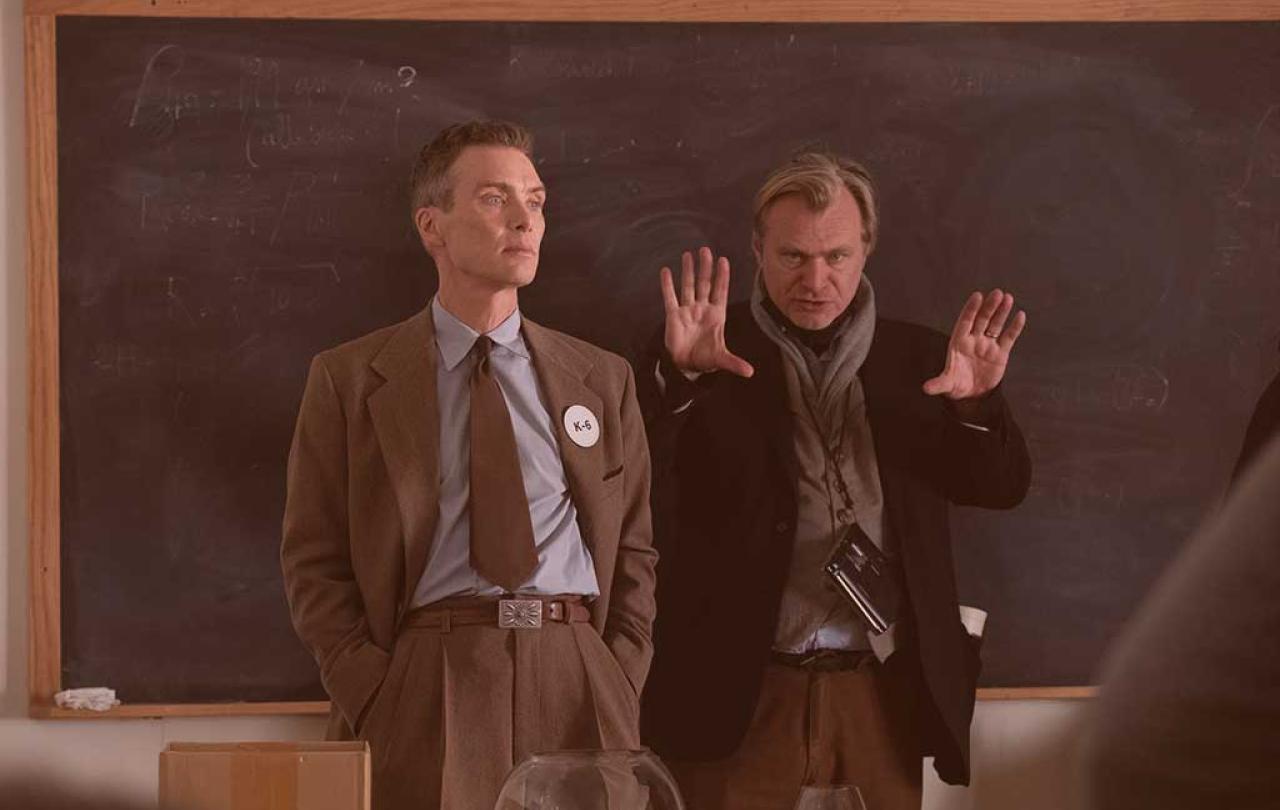
The opening weekend for Oppenheimer has come and gone and the response has been almost unanimously glowing, even gushing.
And truly, the film is a technical masterpiece, demonstrating director Christopher Nolan is working at the height of his power.
The pitch-perfect performances from Cillian Murphy and the impressively star-studded cast, the transcendent yet intimate cinematography, Ludwig Görranson’s hauntingly triumphant score, and the remarkable pacing despite its three-hour runtime make for perfectly dialled-in cinema.
Some may struggle with the dialogue-heavy time-skipping narrative flow of the film, made particularly difficult by the inexplicable voice-muddying sound mix that seems to plague many of Nolan’s recent films. Despite the flaws, however, Oppenheimer is certainly one of the key cinematic moments of 2023. I don’t think I can add anything profoundly new to the gallons of electronic ink already spilt reviewing this film.
Instead, what I can speak to is the most bizarre experience I had as the film came to a close. As the final shot of the biopic reached its climax and cut to black, I found myself suddenly and involuntarily dissolving into tears. I left the film feeling horrified yet inspired, sickened yet soaring, revelling in the triumph of an underdog technological victory as well as being confronted with the banal depravity of mankind. So much brilliance, yet so much brokenness. It invoked such a maximalist emotional response within me, that the only appropriate response my body could come up with was to weep. So… I am by no means an objective reviewer.
Nolan’s depiction of the first nuclear test... is more like a religious epiphany rather than a run-of-the-mill movie explosion.
To call Oppenheimer a ‘biopic’ would be like calling the book of Genesis a biography about Abraham. Nolan’s Oppenheimer takes more of the form of a Myth. ‘Myth’ not in the sense of fiction, but more in the sense that J.R.R. Tolkien or Carl Jung meant it - as a universal narrative that perfectly captures the spirit of the age. And in 2023, apocalyptic anxiety is very much in the air.
Both Nolan and the biography that the film is adapted from - American Prometheus: The Triumph and Tragedy of J. Robert Oppenheimer - don’t shy away from the mythical and religious texture inherent to the story of the Manhattan Project and the development of the atomic bomb.
Oppenheimer is Prometheus - who “stole fire from the gods and gave it to man. For this he was chained to a rock and tortured for eternity”. In fact, the film opens with this quote in white text over a slow-motion nuclear detonation, intertwining Oppenheimer’s life with that of the Greek Titan, Prometheus, who, having given technological fire to humankind, is chained to a tree by Zeus to have his guts eaten out by vultures for the rest of time.
Oppenheimer is also the Hindu God, Krishna, who originally said the now infamous line, “I am become Death, the destroyer of worlds” from the Bhagavad Gita. The phrase he utters at the first test of his invention.
He is the man who decided to name the first test after Triune Christian God - The Trinity Test. The irony is thick. The great creator God of Christianity is represented by the great destroyer of worlds - the atomic bomb. In fact, Nolan’s depiction of the first nuclear test is more like a religious epiphany rather than a run-of-the-mill movie explosion. Some viewers might be disappointed by the impressionistic and almost surreal way the Trinity test is depicted at the climax of the film. Yet, I found the moment almost mystical. The blinding light of atomic devastation is the blinding light of divine glory.
1940s New Mexico becomes the arena for the 21st Century’s struggle against itself and its fraught relationship with technology and morality.
The film doesn’t allow you to extricate the history from the myth, the science from the mystical, or the past from the present. The film explores the particular historical knots that you would expect from a film about Oppenheimer. The equal pride and guilt of the scientists who worked on the bomb post-Hiroshima; the banality of the American military industrial complex; the post-war Soviet nuclear threat; and the enigma of the man himself. There are some very powerful scenes that explore these themes with sickening and gut-wrenching effect. Yet, Nolan is fully aware that his film is in dialogue with the contemporary existential discussions about the dangers of AI, the fear of climate and political apocalypse, and the moral implications of technological progress at all costs.
The star-studded cast is not only hugely impressive but also has the strange effect of continually dragging the historical context of Oppenheimer right into 2023. Nolan has used his considerable clout to draw together a cast of some of the most recognisable and celebrated icons of the 21st century from Cillian Murphy, Robert Downey Jr, and Emily Blunt to Gary Oldman, Rami Malek, and Matt Damon. Only Christopher Nolan could cast a leading man like Gary Oldman and give him 10 lines to say in a three-hour film.
This creates a movie where the most iconic faces of our time come together to play their part in this myth. 1940s New Mexico becomes the arena for the 21st Century’s struggle against itself and its fraught relationship with technology and morality.
In this way, Oppenheimer is more than just a cautionary tale from history. It becomes an icon of our time, in the religious sense. A manifestation of a universal story set in a particular context.
What is three-hundred years of so-called progress, technology, and political theory culminating to? We have no idea.
Many of us will be familiar with Joseph Campbell’s The Hero with a Thousand Faces. A work of comparative mythology which describes the archetypical hero found in the world of myths - The Hero’s Journey. Campbell calls this the Monomyth - the one story which every story is about. A hero ventures forth from his common world, encounters adversity and his inner demons, wins a decisive victory against the forces of death, and returns from this adventure forever changed and with the power to bestow wisdom to his community. This is Luke Skywalker, Aladdin, and Harry Potter but it’s not Oppenheimer.
Christopher Nolan has seemed to have stumbled upon a different monomyth with his biopic. The story of a human community earnestly seeking technological knowledge of the heavenly powers, desiring to harness it, and ultimately unleashing it upon the earth only to discover its civilisation-destroying power. It’s the monomyth of the Tower of Babel. Technology reaching to the heavens resulting in the destruction of the city. But instead of a tower of brick and mortar, Oppenheimer’s tower is a pillar of fire and nuclear ash. Things might seem like grand progress in one moment, yet in the next, it’s annihilation.
Nolan’s decision to make Oppenheimer a biopic has the uneasy effect of intermingling the myths of The Hero’s Journey and the Tower of Babel. Oppenheimer is the protagonist who undergoes all the key beats of the Hero’s Journey. Yet it is precisely this aspirational adventure that culminates in The Tower of Babel. It’s as if the film is saying that those who have most embodied The Hero’s Journey in our Modern Age are those who have also destroyed the world. Oppenheimer is but one example in a retinue of such technological geniuses.
There is a haunting line in the film where one of Oppenheimer’s colleagues refuses to work with him on the bomb. He says:
“I don’t want the culmination of three-hundred years of physics to be a weapon of mass destruction.”
This is still the anxiety that typifies our technological and political moment today. The only difference is, we don’t know where we’re culminating to. Where is three-hundred years of so-called progress, technology, and political theory culminating to? We have no idea.
Maybe this is what struck such a deep primal chord with me as the credits rolled.





